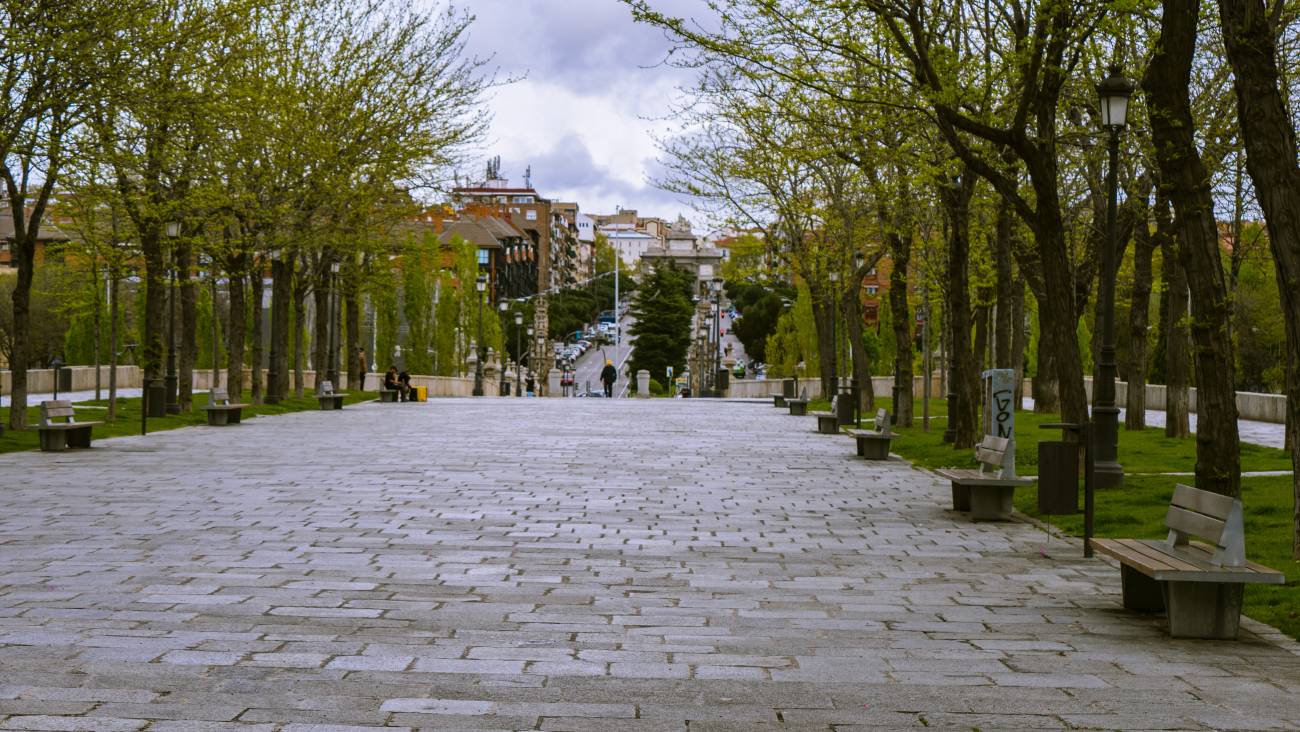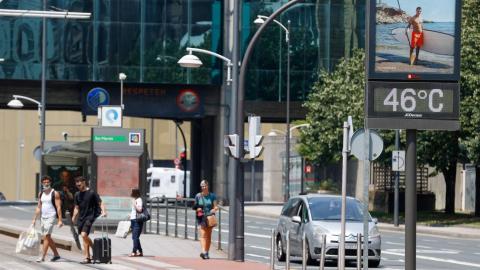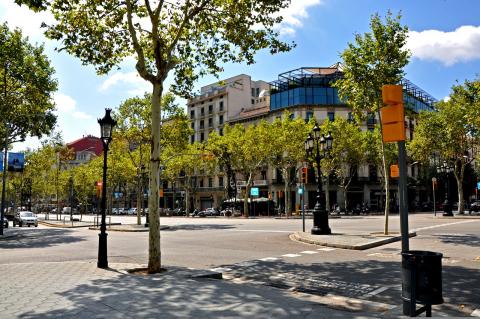Reactions: exposure to urban green spaces is associated with slower epigenetic ageing
Living near green spaces over a long period of time is associated with better health, an association more marked in women and white people than in men and black people, according to a study conducted in four US cities. The analysis concludes that exposure to urban green space between 1985 and 2006 is associated with slower epigenetic ageing, and that this association is stronger in disadvantaged neighbourhoods. The international team publishing this paper in Science Advances includes a researcher from ISGlobal in Barcelona.

Usama Bilal -epigenética espacios verdes
Usama Bilal
Associate professor in the Department of Epidemiology and Biostatistics and co-director of the Urban Health Collaborative and the Center for Climate Change and Urban Health Research at Drexel University's Dornsife School of Public Health
The CARDIA study, on which these data are based, is a very high quality cardiovascular study. It is one of the few studies where we can follow people over a long period of time with information about their place of residence, greenery and parks, etc. It seems that the methods and measures are adequate. These kinds of observational studies always have a number of underlying limitations that are difficult to cover, but I think the authors have done a good job with these limitations and, more importantly, they have a very unique data set (20-year residential history and epigenetics). I think it is a very novel study.
The work is very consistent with the existing evidence that green space is important for our health. It is also consistent with the idea that green space is even more important for low-income people, a phenomenon we call the 'equigenetic hypothesis', the main idea being that parks are especially beneficial for low-income people.
We can't assign causality [based] on these results, but they point us to some important ideas about how green space might influence our health. It continues to confirm something we have been observing for a long time: green spaces are important for health. This study is more methodologically refined, measuring a much more proximal outcome variable (epigenetic affect).
I don't see why the results could not be extrapolated to Spain. The important thing is that these studies on greenness are usually quite sensitive to the climate of each area (because the basal greenness varies a lot based on the climate of each area, of course: Asturias is different from Almeria. In this case they use four very different cities: Oakland in California as a more temperate area with a climate similar to the Mediterranean, Chicago and Minneapolis as areas with cold winters, and Birmingham, Alabama as a much warmer and more humid subtropical area.
Manuel Franco - epigenética zonas verdes EN
Manuel Franco
Head of International Relations at the Spanish Society of Public Health and Healthcare Administration (SESPAS), organiser of the 2026 European Public Health Conference (EUPHA), Ikerbasque Research Professor at the Basque Centre for Climate Change (BC3) and professor and researcher at the universities of Alcalá and Johns Hopkins
This is a very well designed study within a powerful and classic cardiovascular cohort study carried out in different US cities that answers a key question for the health of all those people living in cities today: is long-term exposure to urban green spaces associated with epigenetic ageing? Does the low socioeconomic status of the neighbourhood modify that effect? The results showed that the higher the exposure to green spaces, the lower the epigenetic ageing.
Therefore, we have more and better scientific evidence to increase and promote the use of urban green spaces and that these serve to slow down the epigenetic ageing process, which would help reduce the incidence of chronic diseases and improve the quality of life and life expectancy.
The authors highlight in their conclusions how these findings support policies to promote equity, the use of green spaces by the whole population, and increase their health benefits.
Research on the use of parks involves understanding the processes of gentrification and inequalities in their use. This is something we have already studied in Madrid.
This study has been carried out in the USA, with a society that uses parks less than Spanish society. In this sense, and now that the heat is coming, the use of parks as resources that promote and protect the health of citizens is fundamental.
Mario Fontán - espacios verdes epigenética EN
Mario Fontán Vela
Researcher at the National Epidemiology Centre of the Carlos III Health Institute, Associate Professor of Preventive Medicine and Public Health at the University of Alcalá.
This is an interesting study on the relationship between exposure to greenness within a 5-km radius over 20 years (measured by satellite imagery that detects greenness using infrared), and ageing by studying changes in gene expression associated with ageing. Overall, the results show that greater exposure to greenness is associated with less ageing. Furthermore, they find that this association is more pronounced among women, white people and people from more deprived neighbourhoods, which has implications for the design of public policies to reduce health inequalities. As the study was conducted in different regions of the United States, the results may not be extrapolated to the Spanish context, for example, as urban design has a different history and evolution.
The value of the study is that the researchers have followed up the same people over a time interval of twenty years, which makes it possible to control for some of the design problems in epidemiological studies without follow-up. However, of the more than 5,000 participants who started the study, [the researchers] only analyse 924 people for whom they have complete information on the study variables after 20 years of follow-up. These people may have different characteristics from the rest of the people not included in the analysis. Another problem with the research is that it does not study the types of green spaces to which people have been exposed and their quality, which could explain some of the differences found between social groups who might make different use of these spaces, despite considering themselves exposed because they are located around their homes. Finally, although the study of genetic changes is interesting, the results are more difficult to interpret in comparison with other studies that analyse quality of life, diseases or mortality.
Kyeezu Kim et al
- Artículo de investigación
- Revisado por pares
- Estudio observacional
- Humanos



